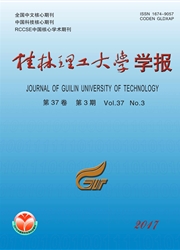

 中文摘要:
中文摘要:
储层岩石的地震弹性属性是进行油气储层勘探及动态监测的基础。系统选取东营凹陷古近系各层段砂岩样品250块(以沙河街组为主),在模拟储层条件下利用脉冲穿透法测试样品的纵、横波速度。样品在纵波速度一泊松比交汇图中表现出两种主要变化趋势,分别对应泥质与钙质胶结物的影响;在每个变化趋势中随泥质含量与钙质胶结物含量的增加,岩石结构从颗粒所构成的骨架支撑逐渐表现为基质支撑,弹性波能量的传播也从通过颗粒接触边界转变为通过岩石基质传播,这是使砂岩样品测试结果表现出两种截然不同变化趋势的主要原因,为利用岩石物理特性从地震资料中提取岩石结构、沉积与成岩特征的信息提供了依据。
 英文摘要:
英文摘要:
The seismic properties of reservoir rock provide the basis for hydrocarbon exploration and dynamic monitoring. More than 250 sandstone samples are selected from Shahejie Formation of Paleogene age in Dongying drepression, and compressional-and shear-wave velocities are measured by pulse transmission technique. Two dominate variation trends are distinguished in the data plots of compressional-wave velocity versus Possion ratio, indicating the effects of mud content and calcite cement on the elastic properties of sandstone samples. In each change trend, with the rock texture transfering gradually from grain-supporting to matrix-supporting with increasing mud and calcite cement content, the propagation of elastic wave also changed from grain-to-grain contacts to rock matrix, which resulted in the measured data illustrating extremely different tendency. It helps utilize the physics properties of reservoir sandstone to extract rock texture and diagenesis properties in the research area.
 同期刊论文项目
同期刊论文项目
 同项目期刊论文
同项目期刊论文
 The influence of mesoscopic flow on the P-wave attenuation and dispersion in a porous medium permeat
The influence of mesoscopic flow on the P-wave attenuation and dispersion in a porous medium permeat 期刊信息
期刊信息
